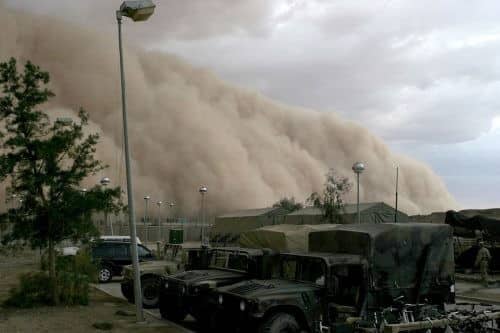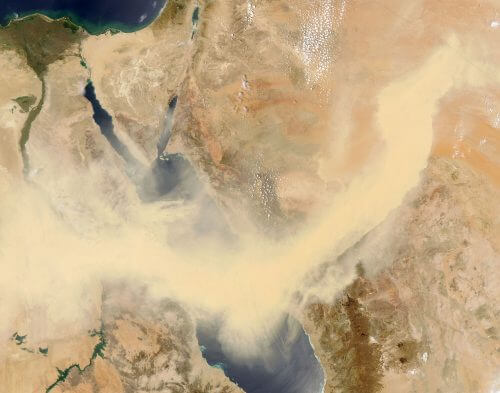The search for the geographic "signature" of the origin of antibiotic resistant genes

Every year about 10 sand and dust storms arrive in Israel from the Sahara desert, and several more from the Saudi West and the Syrian desert. Scientists who study these atmospheric phenomena, examine the air currents, the temperatures, the composition of the minerals in the dust particles, and more. Recently added to all these Another aspect, which may shed light on the impact of dust on human health and natural living environments.
It turns out that the dust particles carried by the wind also carry bacteria with them, and that some of them can contain genes that give them resistance against drugs and antibiotics, cause diseases or change the functioning of ecological environments. Prof. Yanon Rodich and the members of his research group, including post-doctoral researcher Dr. Daniela Gat and former research student Yanon Mazar, in the Department of Earth and Planetary Sciences at the Weizmann Institute, and in collaboration with Edi Tzitrin from the Vulkani Agricultural Research Center, and Vigal Aral from the Hebrew University of Jerusalem, examine the genetic pool of the bacteria carried in the wind, along with the dust particles.
"It is, in fact, the microbiome of the dust," says Prof. Rodich. "It turns out that the microbiome of a dust storm that comes from the Sahara is different from that of the dust that comes from Saudi Arabia or the Syrian desert and that there is a certain compatibility between the bacteria identified in the dust and the different environmental conditions in each region." During dust storms, the concentration of bacteria and the number of their species in the atmosphere increase significantly compared to days when there are no dust storms. As a result, people who stay outside are exposed to more germs.
So far, the presence of certain disease-causing bacteria has not been tested among the bacteria carried by the dust storms, but the scientists are testing the concentration and prevalence of genes that confer resistance to antibiotics, and the differences between the storms that come from different sources.

Bacterial resistance to antibiotics is defined by the World Health Organization as one of the biggest medical challenges the world will have to face in the 21st century. The common perception is that resistance develops as a result of extensive use of various antibiotics and drugs. But in fact, this feature also developed naturally, in different soil bacteria - of the kind that are carried in dust storms.
Prof. Rodich says that genes conferring resistance may also pass from bacterium to bacterium, and that one of the results of the research is the ability to distinguish the "signature" of the source of the antibiotic-resistant genes, and to identify the source in which they developed: if it is in the local soil of the region of Israel over which the dust storm is taking place - or that they came from afar, from the place from where the storm set out. "Thus", says Prof. Rodich, "we found that the more mixing there is between 'local' dust and dust that comes from afar - the frequency of the emergence of genes conferring resistance to antibiotics decreases."
City air
Urban air pollution is a well-known phenomenon that has effects on public health all over the world. Many attribute much of the pollution to vehicle emissions. Prof. Rodich and faculty scientist Dr. Michal Pardo-Levin, We looked at other sources of contamination, And they showed that a significant part of the air pollution is not actually related to the exhaust from the car engines, but rather to the substances released as a result of tire wear and the braking systems of the various vehicles. That is, even if we succeed in building systems that will greatly reduce the emission from the engines, a significant part of exposure to pollution will still occur as before. As far as is known, it is difficult to prevent the wear of tires and braking systems.
